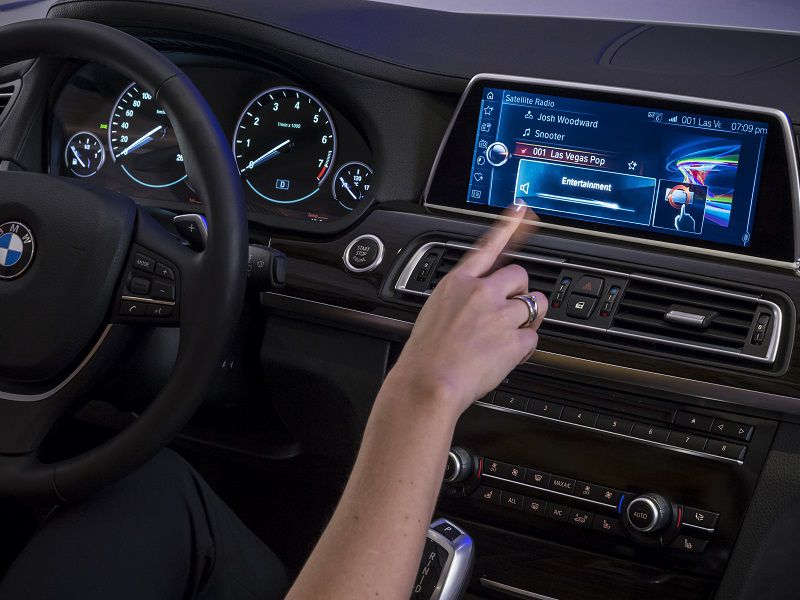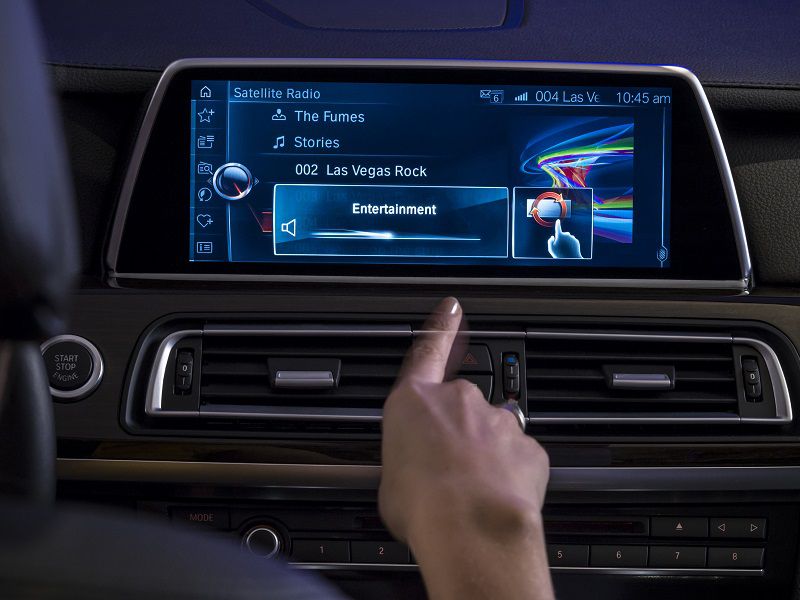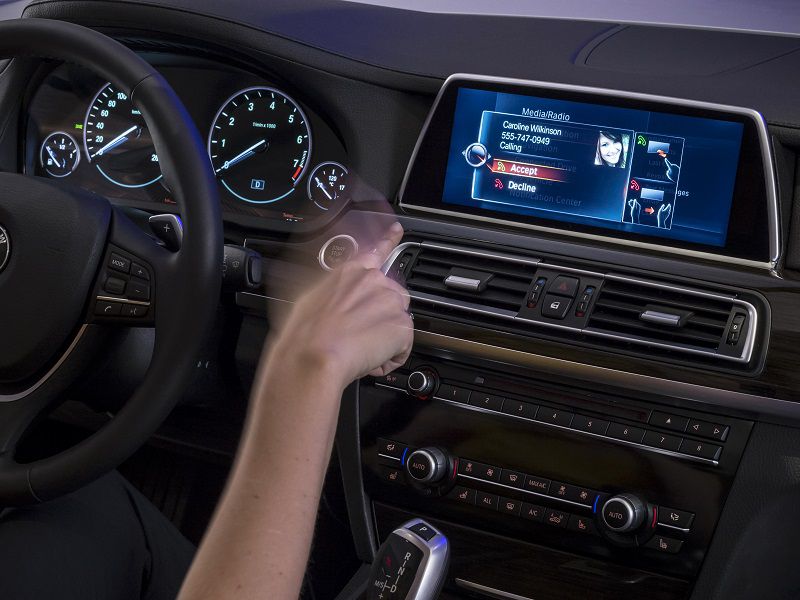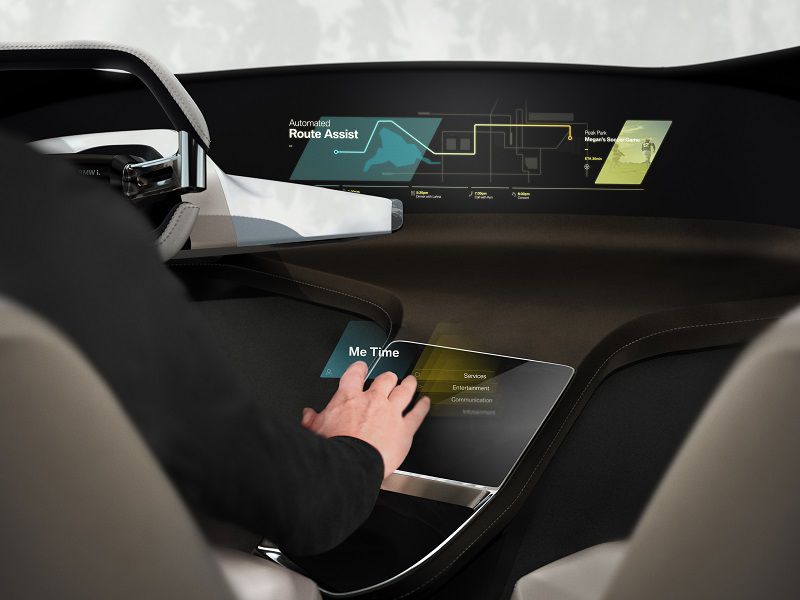Recent Articles
Popular Makes
Body Types
What Is BMW Gesture Control?

BMW Gesture Control Finger Volume iDrive ・ Photo by BMW
“Minority Report” is a mostly forgettable 2002 Tom Cruise film, directed by Steven Spielberg. One fascinating scene, though, is seared into the public memory. Cruise, as Precrime investigator John Anderton, stands before a computer screen attempting to unravel the details of a murder that’s about to be committed. Using only hand gestures, he manipulates the images and text onscreen in a grand, balletic performance.
The film didn’t capture the imagination — but the futuristic technology did. BMW Gesture Control distills the drama of “Minority Report” down to human scale, allowing users to affect certain aspects of the iDrive infotainment system without making contact with a knob or touchscreen. Let’s take a closer look at BMW Gesture Control.
What is BMW iDrive?
BMW iDrive was introduced in 2001 to decidedly mixed reviews. It is an interface to control infotainment, communications, HVAC, navigation, and other vehicle settings via one central knob and display. Supporters praised its elegance and comprehensiveness, while detractors cursed its nested menus and steep learning curve. BMW presents iDrive as “both a substitute for and a complement to conventional switches and buttons,” and claims that the system “was revolutionary when first introduced and was subsequently imitated throughout the automotive industry.”
Now in its sixth generation, iDrive has evolved into a much more intuitive and sophisticated system. The central knob has been surrounded by a set of hard buttons, making direct access to important functions much quicker.

Photo by BMW
How does Gesture Control work?
First, the user must activate Gesture Control in the iDrive menu. A small overhead sensor monitors the area directly in front of the touchscreen at the top of the center stack, where it can detect and interpret several distinct hand gestures. When the system detects a gesture, it gives an audible and visual confirmation that it is registering the input, and then executes the command that it interprets from the gesture.
This technology has been used in other industries with mixed results, particularly in the video game console arena. Remember the late lamented Kinect, once a central feature in Microsoft’s Xbox One platform?

Photo by BMW
Which gestures does Gesture Control recognize?
Gesture Control recognizes the following hand gestures and performs actions in response:
- Clockwise rotation of the index finger – increases audio volume
- Counter-clockwise rotation of the index finger – decreases audio volume
- Point finger toward touchscreen – accepts incoming phone call
- Left-to-right swipe of hand past touchscreen – rejects incoming phone call
- Pinch-move with thumb and index finger – rotates the 360-degree camera view on touchscreen
- Two-finger point toward touchscreen – customizable function
The customizable function could be a simple one, like “open map view.” It could also be a more complex, nested function, like “set destination for home.” Most of the Gesture Control functions are redundant, meaning they can also be handled with dedicated knobs and switches on the center stack, steering wheel, and/or touchscreen.

Photo by BMW
Why does BMW offer Gesture Control?
BMW has always touted iDrive as a convenience feature that also offered safety. The company claimed that the central control knob can be operated easily without taking your eyes off the road: One knob to rule them all. With the evolution of the system, there has been some drift. Additional buttons and controls have crept in, and the iDrive display has become a touchscreen.
Gesture Control can potentially restore simple and safe operation to iDrive in certain situations. Once users master the intuitive gestures, they should be able to perform them with little distraction. The hand gestures don’t require exact placement like touchscreen or button operation. How many times have you experienced the frustration of touchscreen operation on a bumpy road? Unintended and false inputs can make this a distracting action. Gesture Control is much less susceptible to jostling and requires minimal precision. Also, it's cool technology, and BMW was the first auto manufacturer to make it available. Gesture Control is currently available in the 5 Series, 6 Series, and 7 Series models.

Photo by BMW
What is the future of BMW’s driver/vehicle interface?
BMW gave a peek into what’s next at CES 2017, the Consumer Electronics Show in Las Vegas. A display called “BMW i Inside Future” showcased BMW HoloActive Touch, a possible future interface and in-car display technology. According to BMW, HoloActive Touch “fuses the advantages of the BMW Head-Up Display, BMW gesture control and intuitive touchscreen functionality with revolutionary technology to create a completely new kind of user interface for the vehicle interior of the future.”
The interface is a free-floating virtual display that is projected over the center console. The driver or passenger operates the system with finger movements, confirmed with haptic ultrasound feedback. There’s no actual contact with a screen, knob, or button. This all sounds a lot like Tom Cruise moving screens around in “Minority Report.” Maybe the future isn’t so far away after all.

Photo by BMW